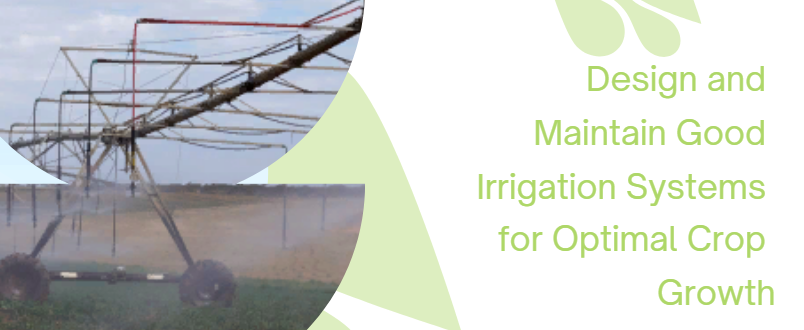#IrrigationManagement #Agriculture #SustainableFarming #WaterEfficiency
Effective irrigation systems play a vital role in modern agriculture, maximizing crop yields while conserving water resources. This article explores the importance of well-designed irrigation systems and regular maintenance to achieve efficient water delivery and uniform distribution, ensuring the success of crop growth. From initial design considerations to long-term consequences, we delve into the key factors that farmers and growers must address to optimize their irrigation practices.
To achieve successful irrigation management, it is crucial to tailor the irrigation system design to the specific needs of the crops, soil type, landform, and water quality. Poorly designed systems can hamper efficient irrigation management, leading to issues like over-watering, under-watering, and uneven water distribution, which can severely impact crop health and productivity (Skewes and Meissner, 1998). Therefore, it is imperative to enlist the expertise of a Certified Irrigation Designer to develop appropriate specifications for pumping plants, supply lines, and nozzle packages. Following these recommendations precisely will help avoid serious problems and ensure the irrigation system operates optimally.
Engaging a Certified Irrigation Designer offers several benefits, including a system that meets crop requirements efficiently. Irrigation Australia serves as a prominent national organization representing irrigation industries in Australia. They also provide valuable training and certification packages through the Centre of Irrigation Excellence, offering various designations such as Certified Irrigation Designer, Agronomist, Contractor, Installer, Manager, Operator, Retailer, and Meter Validator.
Regular maintenance is a key aspect of irrigation system management. Over time, irrigation infrastructure may face challenges like decreased overall pressure, increased flow rates due to nozzle wear, and declining distribution uniformity. To ensure the system’s longevity and optimal performance, periodic checks are essential. Ideally, annual inspections during the non-irrigation season allow easy detection and repair of major faults. Drip/micro systems, in particular, should be flushed through at least once a year and possibly cleaned using a chemical treatment (Skewes and Meissner, 1998).
For drip/micro and center pivot systems, a more comprehensive test should be conducted every two to four years, while overhead sprinkler systems need a detailed inspection every five to ten years. It is crucial to replace or overhaul components as needed to ensure the sprinklers operate at their best capacity.
The selection and maintenance of the irrigation system’s pumping plant significantly impact the enterprise’s financial efficiency. Decisions should not solely be based on initial capital outlay, as running costs form a substantial part of the total pumping cost. Regular pump performance tests conducted by consultants are beneficial, but a complete overhaul every three to five years is the most effective way to maintain pumping plant performance (Skewes and Meissner, 1998).
Designing and maintaining efficient irrigation systems are vital components of successful agriculture and sustainable farming practices. By considering factors like crop type, soil type, landform, water quality, and supply, farmers can optimize water usage and crop yields. Regular maintenance ensures that the irrigation system operates effectively, extending its lifespan and reducing the risk of crop water stress. By adopting Certified Irrigation Designers’ expertise and adhering to recommended practices, farmers can make significant strides towards water-efficient and economically viable agricultural operations.
Source: Australian Potato Growers
